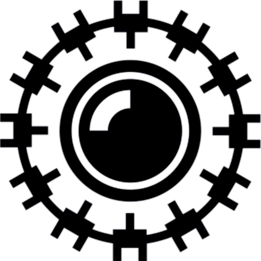The respondent, a 31-year-old Pakistani man, recounted an especially violent pushback from Greece to Turkey. The respondent himself had experienced four pushbacks prior to this, but “this was the most violent” he explained.
On the 25th of May, the respondent crossed into Greece in a group of by 50 people of Kurdish, Syrian or Pakistani origin. Within the group, there was a Syrian family and children as young as 8-10 years old, as well as some babies. The respondent, however, was in a group of only 15 people when they were detected and caught as the group had split up when they crossed and some managed to run away. The respondent explained that he experienced more violence at the hands of the Greek authorities because he ran away. There were 5 women and 2 children among the respondent’s group that was apprehended.
The apprehension took place near to Alexandroupouli, in front of a church near to a highway at around 8pm. It was very dark, but the respondent was able to identify 4 to 5 police cars. He believes these cars were army cars and black private cars, but was not able to see more as the officers who apprehended them shone a light into his eyes, so he could not see and was forced to the ground. He stated there may have been more cars but that every time “I looked up, I was hit.”
He explained that the officers must have been using night vision goggles to find them, as he saw some of them standing holding them. In total there were at least 15 officers. He was not able to identify whether they were wearing balaclavas, as it was too dark to see their faces, but he confirmed they were wearing camouflage army uniforms. There were about four officers who beat the group, and the rest of the officers were either sitting in or standing by the vehicles, and other officers were looking and watching through what were either binoculars or night vision goggles. The respondent also explained that there were officers standing near what looked like a “trip wire”. These officers spoke in either Greek or Turkish, speaking only in curse words.
“I screamed. I was scared I was going to die. I was close to passing out. They were hitting with sticks.”
The “sticks” the respondent described – were “really fat”, and “3 or 4 feet” in length (approx. 1 meter). The respondent went on to explain he had blood in his urine because of the beating. He was hit in his abdomen many times.
“Everyone was hit,” recounted the respondent.
“They hit the children bad. It was like what happened when George Floyd was killed, the officers put their knees on the children’s necks. There were lots of noises and screams.”
The respondent described a line of the above-mentioned vehicles with their lights on, shining light at the 15 people who were all forced to the ground by the officers.
“They were hitting women and children the same [as the men]”.
When the women asked for food for the children, the officers said no. The officers took shoes from the babies and children in the group. “We did not know what to say to them [the officers]”, explained the respondent, “it does not matter what we said, they kept hitting us”. The respondent stated that the group endured these beatings for 40-50 minutes. He said that there was no logic as to where they were beaten – they were “hit everywhere”. The group was forced to lie face down on the ground for around 1.5 hours while the other officers looked for the rest of the larger group that had not been apprehended.
Then, after this ordeal, they were loaded into a white van at the place of apprehension. All 15 people were loaded into the same van. “It was a tight space, we could not breathe.” They were driven for about 30 minutes, fast, along bumpy roads. They were not able to see out of the van as it was closed at the sides.
They arrived at a detention site between 9.30-10 PM. The respondent was not able to describe the building from the outside, nor anything in the surrounding area as they were driven up to a door where they entered into the building. The officers drove them to the detention centre and then they [the officers] left.
When they entered the building it was just them there were no other visible detained people. The respondent was able to identify that there were long halls inside this building that ran next to each other. There were 4 officers – all wearing what the respondent described as army uniforms and wearing Covid-19 protection masks.
The respondent reported that the group was told to stand in a line and ordered to remove all of their clothes while they were strip-searched. They were left completely naked. They did not return socks or bags back to them, but “they returned two items of clothes – either pants and shirt, or underwear and shirt”. The respondent said that the officers tore their clothes, and took all of their money. They were there for about 10-15 minutes. There was a different section for women and children, where the women police officers took them. The women and children left, so there were just about 9-10 men left. The respondent explained that he did not try to look to see if there were any other officers, so was unable to confirm if there were any others.
The men were then moved into cells inside this detention site. These cells were about 5×7 meters. When the men were put in their cell, the women and children from their group were also put there. There was no toilet in their cell. It was just their group in that cell initially, but eventually there were about 50 people in it, as more people were brought in by the officers. The respondent explained that he could not walk because of the injuries he sustained from the officers, so he was essentially thrown into the cell where he fell. He stated that he called out for help and two Pakistani men in their mid- to late-twenties tried to help him.
When they were being taken to their cell, the respondent recalled he passed cells that were full. He reported that they were of Syrian, Pakistani, Bangladeshi, Afghan and Iraqi nationalities. He could not see that well inside the cells, so he was not sure if there were women and children there too.
“People were going crazy in the cell”, explained the respondent. When asked whether he knew if the women had been beaten, he explained that he felt too shy to ask the women what had happened to them. But a woman from the group explained that the women were beaten, and when the women asked for water and food for their children, the officers refused them.
The whole group was denied food throughout the time they were there – which the respondent stated was a total of 24 hours. He reported that if anyone said anything in the cells they were hit.
“I could hear the baton [hitting people] and the screams of people[…] The more you speak or scream, they hit you”.
In the cells there was a CCTV camera that moved to watch them. “When someone moved [in the cell], they [the officers] come and have a photo of them” explained the respondent.
After 24 hours of detention, they were taken out of the detention site the same way – the officers did not let them see anything outside. This was on 26th May at approximately 10-11 PM. The respondent was unable to walk as he was so badly injured from the beatings. Therefore, he was one of the last people out of the cell and the building at the detention site, helped by the two young Pakistani men.
The respondent reported that when he was brought out by the two young Pakistani men, he could see there were three army trucks – two had guns fixed into their roofs and another without – and also a white van – the same white van that brought them to the detention site [see below images]. He said that they were full when they were brought out. This is why the respondent presumed those cells next to his were full, as these trucks were full. He was loaded into the white van.
The respondent identified the vehicles in the images below as matching the ones used to transport them from the detention site to the area near the pushback location:
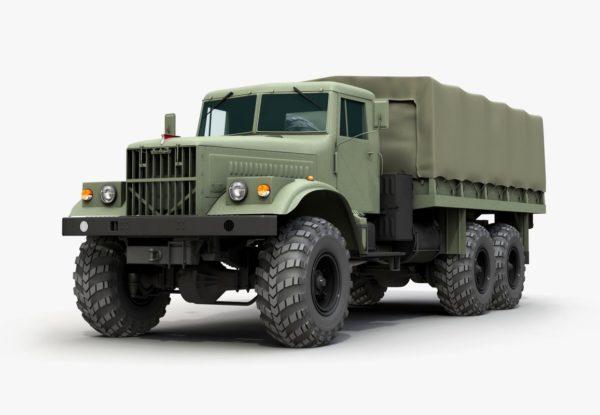
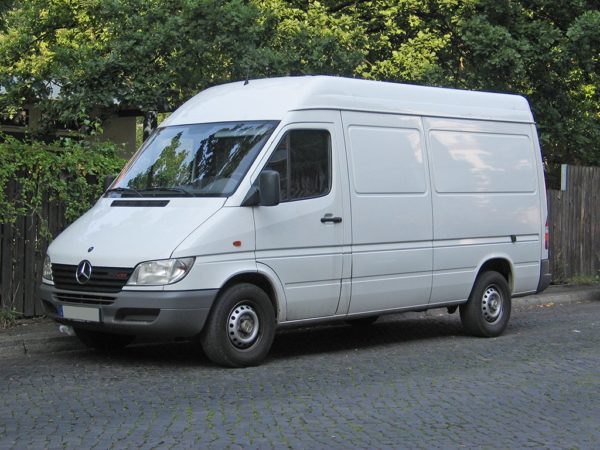
The respondent explained that the officers will not push people back in small groups, but will wait for more people to be caught and push them all back together.
There were about 18-20 people in his white van, and about 35-40 in each of the army trucks. This totals to about 123-140 people in total, according to his calculations. He described seeing one other detainee being pulled out of one of the army trucks and put into the white van that he was in.
The respondent identified that two men wearing army uniforms, drove the white van he was in, but he was unable to identify how many were driving the army trucks.
They were driven for about 30-35 minutes fast and recklessly. The respondent remarked that the road was “really bumpy” and that they kept “hitting the walls of the van”.
When the vehicles reached an area by the Evros/Meriç river, all of the people were unloaded. The respondent recalled seeing there were about 4-5 police cars present at this location – standard white and blue Greek police cars. The respondent stated that in each police car, there were four officers in each car: two officers in the front – who were tasked with searching the group again for money – and then two other officers in the back. So, in total 16-20 officers. From the respondent’s descriptions, it seems that these officers were wearing either blue Greek uniforms, or black uniforms, with either black balaclavas or black helmets – similar to the EKAM uniforms of the Greek police.
The respondent stated that the uniforms in the below images corresponded with those worn by these officers:
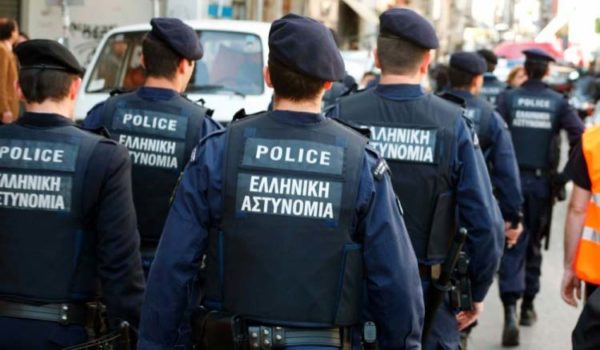
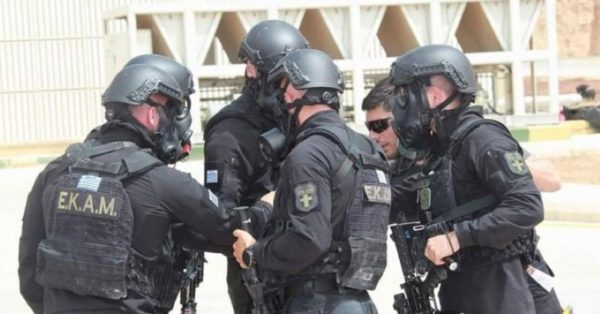
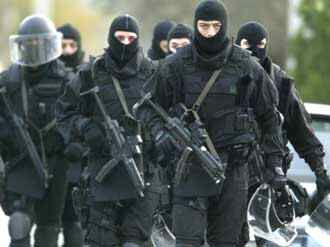
The respondent stated that some of the officers were also carrying large guns – which he identified as similar to AK47’s – and some also had smaller handguns [see below images]. He reported that the officers who had guns threatened members of the groups with the guns, but hit them with batons and tree branches. However, the groups were ordered to look at the floor so they were unable to see very much.
All of the vehicles at the detention site were taken to the same place, and the respondent was able to see all the people, which took about 20 minutes. Each vehicle was unloaded one by one, and the respondent was able to see all the people there as a group. He estimated there were approximately 120-150 people there.
“Some had legs that were so badly broken they had to be lifted up […] The same thing must have happened to them [as happened to me]”.
The entire transit group walked for about 10-15 minutes to the water’s edge at the Evros/Meriç river by the officers. After about 5 minutes into this walk, the groups were again stopped and searched for money.
The respondent reported that when he was being searched again, he told the officers, “you’ve broken my legs, I need money.”
“They [the officers] said “no money. They [the officers] would take shoes and socks from people if they had no money.”
These officers barely spoke to them, and if they did, they spoke in a few words of English. If people did not have money, they would take people’s shoes and socks or whatever small belongings they had left on them.
The respondent stated that some of the officers who were escorting them to the riverside used binoculars in order to check that no one had escaped from the middle of the group.
The respondent reported that when they arrived at the river’s edge, there were about another 15-20 police officers. He identified them as border police officers, wearing a mixture of border police uniforms – blue uniforms, full sage green uniforms, and also some wearing protective vests.
The uniforms in the images below were confirmed by the respondent as corresponding with the ones worn by the officers:
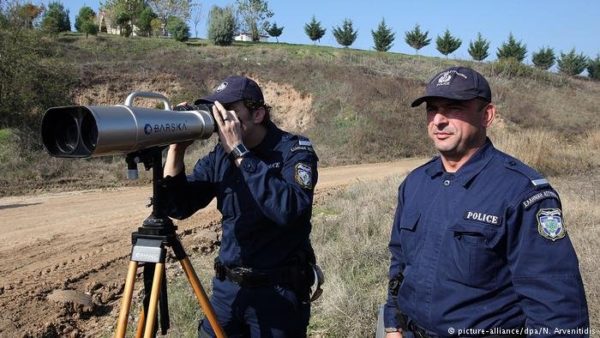


The respondent stated that there were two boats placed on the river’s edge, with quiet engines. He said that on each boat there were two officers who steered the boats, wearing life jackets over their army uniforms. They had balaclavas covering their faces and they were also holding small pistols. In each boat, there were 8-10 people.
The respondent stated that people were hit and pushed into the boats by the officers on the riverside. None of the people from the 120-150 member group were given life jackets when they were put in the boats, including the children and women. These boats were then driven across the Evros/Meriç river, but it depended on the boat what would happen. The respondent stated that some of the boats did not go all the way across the river, and often the people on the boat were pushed off the boat into the water. The water level was up to their chin.
The respondent said that some boats did go all the way to the Turkish side, and if they did the group were told to get off the boat really quickly. The respondent reported that the officers did not care, sometimes they just pushed the people off the boat – on land and in the water.
“Sometimes they feel bad for children, but still throw them in the water.”
The respondent stated that during this entire ordeal, the Greek officers used binoculars to look out to see if the Turkish authorities were on the other side, and if they saw them they would stop and get everyone to lie down.
After they got to the Turkish side, they came across a mountainous area, which they crossed. The respondent and others walked for 5-6 hours – and they did not come across Turkish authorities during this time. After crossing through the mountains, they crossed small rivers, walked through forests, and fields and small villages during this time. He was able to cross this land with the help of the same two young Pakistani men.
Then, after 5-6 hours, the respondent managed to get a taxi, and hid in the boot for 2-2.5 hours until they arrived back in Edirne city.
After speaking with the respondent, he was able to identify the mountainous region as Gala Gölü Milli Parkı (Lake Gala National Park) due to the topography, and also the time it took him to get back to Edirne City. And the pushback point, before being met with mountains after they were pushed back to Turkey, was identified as just down from Feres and Poros, being along the river close to Perifereiaki Zoni Parkou.
